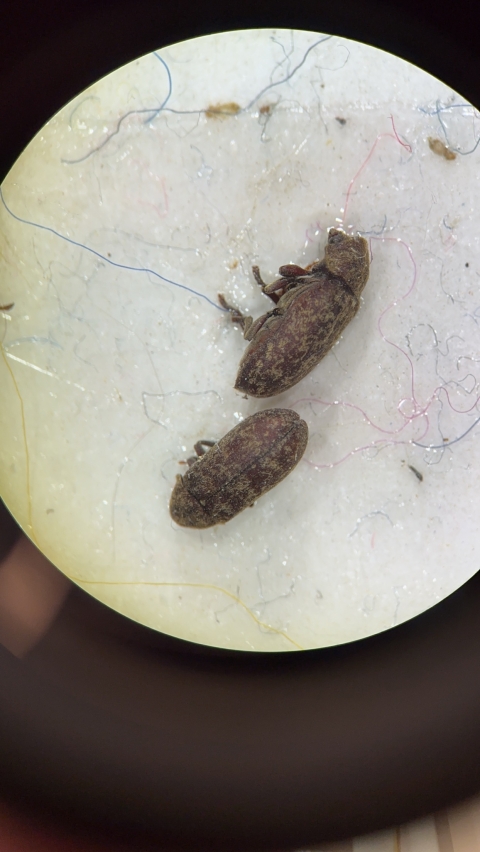A giant deathwatch beetle 40 times bigger than its original size has been created using specialist 3D printing facilities at the University of Portsmouth.
The model was printed on the request of the National Museum of the Royal Navy who are currently working on The Big Repair, a ten-year, £45m restoration project designed to repair and preserve HMS Victory - the world's oldest naval ship still in commission - for future generations.
The project is uncovering a wealth of new information about the behaviour of deathwatch beetles, which have been plaguing Vice-Admiral Lord Nelson's favourite warship since they were first identified within her timbers in 1932.
The original beetle, measuring only a few millimetres in length, was scanned by Dr. Charles Wood using advanced X-ray imaging equipment within the Future Technology Centre. The resulting 3D copy was subsequently printed by technicians within the School of Mechanical and Design Engineering at the University of Portsmouth. It was created when staff at the the National Museum of the Royal Navy wanted to educate the public on the work being done on HMS Victory, and show some of the intricate detail of the deathwatch beetle that would otherwise be too small to see for most to observe.
Lab-based 3D X-ray imaging is such a versatile tool, allowing microscopic information to be captured non-destructively, which is particularly useful for valuable heritage artefacts. In this case, we were able to capture exquisite detail of the deathwatch beetle, and magnify this through the 3D printing process.
Dr. Charles Wood, Senior X-ray scientist from the University of Portsmouth
Brooke Oakley, Conservation Scientist (HMS Victory) said: "The idea behind the 3D printing was to have a visual tool to show people deathwatch beetles. The deathwatch beetles are a huge part of Victory's big repair, however they are very small so it's difficult to show the public, and photos don't always suffice. We do outreach in schools, and this is a brilliant tool for all children, but is particularly good for children with special educational needs who may be heavily sensory oriented, visually impaired or simply a visual learner."

Deathwatch beetles found on HMS Victory
The idea behind the 3D printing was to have a visual tool to show people deathwatch beetles. The deathwatch beetles are a huge part of Victory's big repair, however they are very small so it's difficult to show the public, and photos don't always suffice.
Brooke Oakley, Conservation Scientist (HMS Victory)
The big green beetle took over 30 hours to print. Dr. Charles Wood, senior X-ray scientist from the University of Portsmouth said: "Lab-based 3D X-ray imaging is such a versatile tool, allowing microscopic information to be captured non-destructively, which is particularly useful for valuable heritage artefacts. In this case, we were able to capture exquisite detail of the deathwatch beetle, and magnify this through the 3D printing process. The slightly unnerving aspect came when mounting the beetle for X-ray imaging, which had been deceased some time, as the tiny leg structures kept catching on the mounting material, resulting in the dead beetle 'jumping' from its sample mount. It's been an interesting project so far, and has certainly inspired some colourful questions, including "were they green?" and "were they that big?". Can you imagine?! Stuff of nightmares".
The 3D prints will be used during the scaffold tours of HMS Victory over Easter.






